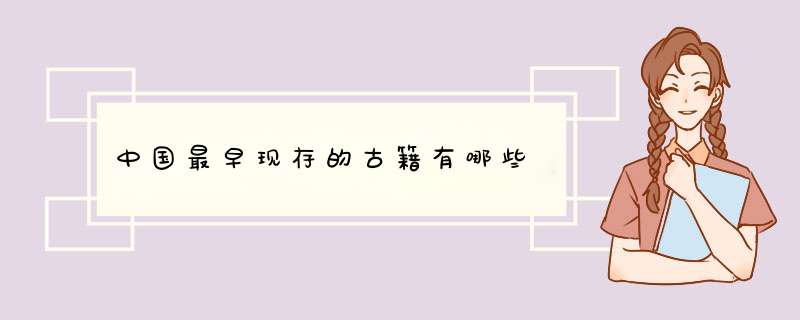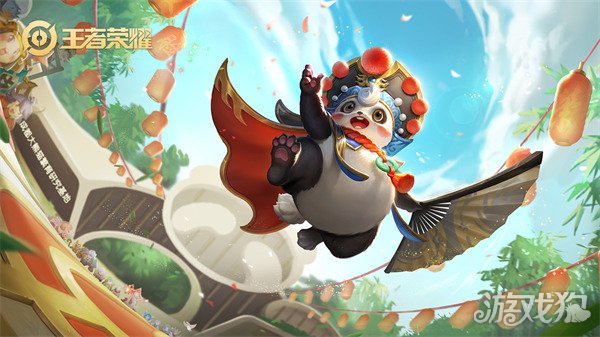英语作文<少数民族--西藏>的翻译

众所周知,中国有55个少数民族,每个民族都有自己的风俗习惯,服装和文化。那让我们来看一看藏族。藏族生活在青海,甘肃,四川云南等省份。有“世界屋脊”之称的美丽,神秘的西藏是他们的栖息地。
2019年6月英语四级翻译题:国画
请将下面这段话翻译成英文:
国画是中国文化遗产的重要组成部分。不同于西方画,它是用毛笔(Chinese brush)和墨汁在宣纸(xuan paper)上作画的。精通这门艺术需要不断重复的练习, 需要控制好毛笔,需要对宣纸和墨汁有一定的认识。绘画前,画家必须在脑海里有一个草图并根据他的想象力和经验进行绘画。许多中国画家既是诗人,又是书法家。他们经常会在自己的画上亲手添加诗作。
参考翻译:
Chinese painting is an important part of thecountry's cultural heritage It distinguishes itselffrom Western painting in that it is drawn on xuanpaper with the Chinese brush and Chinese ink Toattain proficiency in this art, it is necessary to havea good control of the brush, and certain knowledge of xuan paper and Chinese ink besidesrepeated exercisesBefore painting, the painter must have a draft in his mind and drawaccording to his imagination and experienceMany a Chinese painter is at the same time a poetand calligrapher who often adds a poem with his own hand on the painting
解析:
1不同于西方画,它是用毛笔和墨汁在宣纸上作画的:“不同于”可译为distinguish oneself from sth,也可用bedifferent from 表示。“毛笔和墨汁”可译为the Chinesebrush and Chinese ink,此处可同用一个冠词表示整体;“用”可用介词with,表示方式。
2精通这门艺术需要不断重复的练习,需要控制好毛笔,需要对宣纸和墨汁有一定的认识:“精通这门艺术”可译为toattain proficiency in this art,attain意为“获得、获取”,proficiency意为“精通、熟练”。“需要控制好毛笔,需要对宣纸和墨汁有一定的认识”,该句可理解为“控制好毛笔和认识宣纸、墨汁也是必要的”。
2019年6月英语四级翻译题:维吾尔族请将下面这段话翻译成英文:
维吾尔族(Uygur)是中国的一个少数民族。维吾尔族人喜欢喝奶茶,吃肉和用面粉烤制的馕(nang)。他们有自己的语言和文字。他们的文学具有一种独特的民族风格,其中“阿凡提的故事”(the Story of Afanti) 中国各族人民的喜爱。维吾尔族是个能歌善舞的民族,每逢节日和婚礼,他们都会邀请客人和他们一起跳传统民间舞蹈。他们的民歌优美动听,被广泛传唱。
参考译文:
The Uygur is a Chinese ethnic minorityUygur people like to drink milk tea, eat meat and nang baked with flourThey have their own spoken and written languagesUygur literature is of a unique ethnic style, among which the Story of Afanti is favored by all ethnic groups in ChinaThe Uygur people are good at singing and dancingThey will invite guests to join them in their traditional folk dance in festivals and wedding ceremoniesTheir folk songs sound beautiful and are widely sung
解析:
1第2句中的定语“用面粉烤制的”较长,可将其处理成后置定语,用分词短语baked with flour来表达,表被动。
2在第3句中,“语言”侧重指口头的,而“文字”则侧重指书面的,故该句可译为They have their own spoken and written languages。该句也可对应地译为 They have their own languages and characters。
3在第4句中,“具有……风格”可用be of style来表达;“其中……”可用among which引导的定语从句来表达,将前后两个分句连接起来,使分句间的语义关系更加紧密。
4倒数第2句较长,后两个分句“每逢……”和“他们都会……”之间语义联系紧密,可合译为一个句子,第1个分句则单独另成一句。在“维吾尔族是个能歌善舞的民族”中,“能歌善舞”的施动者是“人”,而非“民族”,故需译为 The Uygur people are good at。“每逢”作状语,可译为 in festivals and wedding ceremonies,置于句末。
"The Analects of Confucius"
"Book of Changes"
鬼谷子Guiguzi
三十六计Thirty-Six
兵书战策 Art of war war policy
二十五史Twenty-five Histories
四书五经Classics
菜根谭Cai Gen Tan
回鹘 [huí hú] [回鹘]基本解释
1即回纥。详“回纥”。
2见“回纥”。
[回鹘]详细解释即回纥。详“ 回纥 ”。
见“ 回纥 ”。
[回鹘]百科解释回鹘即回纥,由回纥改名而来。回鹘(拼音:huí hú; 尔文:Uighur/Uigur)又作回纥,是中国的少数民族部落, 尔族的祖先。主要分布于新疆,另外在内蒙古、甘肃、蒙古以及中亚的一些地区也有散居。汉文史料中“回纥”一词来自古回纥文,回鹘之名来源于部落韦纥、乌护。788年,回纥改名回鹘,取义为“回旋轻捷如鹘”。回纥是铁勒诸部的一支,韦纥居住在土剌河北,乌护居住在天山一带。回鹘一度作为突厥汗国的臣属。突厥汗国强盛时,回纥部落臣服突厥。743年,回纥汗国灭突厥,统一铁勒诸部,回纥逐渐成为铁勒诸部的统称。840年,回鹘汗国瓦解,居住在漠北的回鹘部落大部分南下华北,其余部分分三支西迁,其中一支 更多→ 回鹘
[回鹘]英文翻译Uighur
[回鹘]相关词语 山戎 西夏 嚈哒 北宋 匈奴 北齐 南宋 北魏 女国 吐蕃 柔然 [回鹘]相关搜寻 回鹘文 回鹘豆 怨回鹘
The following is a list of ethnic groups in China where "China" is taken to mean areas controlled by either of the two states using "China" in their formal names, the People's Republic of China (PRC) and the Republic of China (ROC, "Taiwan")
The Han Chinese are the largest ethnic group, where some 9159% of the population was classified as Han Chinese (~12 billion) Besides the majority Han Chinese, China recognizes 55 other "nationalities" or ethnic groups, numbering approximately 105 million persons, mostly concentrated in the northwest, north, northeast, south, and southwest but with some in central interior areas
The major minority ethnic groups are Zhuang (161 million), Manchu (106 million), Hui (98 million), Miao (89 million), Uyghur (83 million), Tujia (8 million), Yi (77 million), Mongol (58 million), Tibetan (54 million), Buyei (29 million), Dong (29 million), Yao (26 million), Korean (19 million), Bai (18 million), Hani (14 million), Kazakh (12 million), Li (12 million), and Dai (11 million)
Officially recognised ethnic groups in China
In order of population,[1] this is the list of the 56 ethnic groups in China that are officially recognized However, the government of the People's Republic of China only claim 55[2] different minority groups within their borders Members of several ethnic groups reside in Hong Kong and Macau, but due to the long separation from China, many of these ethnic groups are generally unknown to the Special Administrative Regions (of People's Republic of China) of Hong Kong and of Macau
English name Pinyin S Chinese T Chinese Population
Han Hàn Zú 汉族 汉族 1,230,117,207
Zhuang Zhuàng Zú 壮族 壮族 16,178,811
Manchu Mǎn Zú 满族 满族 10,682,263
Hui1 Huí Zú 回族 回族 9,816,802
Miao2 Miáo Zú 苗族 苗族 8,940,116
Uyghurs Wéiwúěr Zú 维吾尔族 维吾尔族 8,399,393
Tujia Tǔjiā Zú 土家族 土家族 8,028,133
Yi Yí Zú 彝族 彝族 7,762,286
Mongols Měnggǔ Zú 蒙古族 蒙古族 5,813,947
Tibetan3 Zàng Zú 藏族 藏族 5,416,021
Buyei Bùyī Zú 布依族 布依族 2,971,460
Dong Dòng Zú 侗族 侗族 2,960,293
Yao Yáo Zú 瑶族 瑶族 2,637,421
Korean Cháoxiǎn Zú 朝鲜族 朝鲜族 1,923,842
Bai Bái Zú 白族 白族 1,858,063
Hani Hāní Zú 哈尼族 哈尼族 1,439,673
Kazakh Hāsàkè Zú 哈萨克族 哈萨克族 1,250,458
Li Lí Zú 黎族 黎族 1,247,814
Dai4 Dǎi Zú 傣族 傣族 1,158,989
She Shē Zú 畲族 畲族 709,592
Lisu Lìsù Zú 僳僳族 僳僳族 634,912
Gelao Gēlǎo Zú 仡佬族 仡佬族 579,357
Dongxiang Dōngxiāng Zú 东乡族 东乡族 513,805
Gaoshan5 Gāoshān Zú 高山族 高山族 458,000
Lahu Lāhù Zú 拉祜族 拉祜族 453,705
Sui Shuǐ Zú 水族 水族 406,902
Va Wǎ Zú 佤族 佤族 396,610
Nakhi6 Nàxī Zú 纳西族 纳西族 308,839
Qiang Qiāng Zú 羌族 羌族 306,072
Tu Tǔ Zú 土族 土族 241,198
Mulao Mùlǎo Zú 仫佬族 仫佬族 207,352
Xibe Xíbó Zú 锡伯族 锡伯族 188,824
Kyrgyz Kēěrkèzī Zú 柯尔克孜族 柯尔克孜族 160,823
Daur Dáwòěr Zú 达斡尔族 达斡尔族 132,394
Jingpo7 Jǐngpō Zú 景颇族 景颇族 132,143
Maonan Màonán Zú 毛南族 毛南族 107,166
Salar Sǎlá Zú 撒拉族 撒拉族 104,503
Blang Bùlǎng Zú 布朗族 布朗族 91,882
Tajik Tǎjíkè Zú 塔吉克族 塔吉克族 41,028
Achang Āchāng Zú 阿昌族 阿昌族 33,936
Pumi Pǔmǐ Zú 普米族 普米族 33,600
Ewenki Èwēnkè Zú 鄂温克族 鄂温克族 30,505
Nu Nù Zú 怒族 怒族 28,759
Jing8 Jīng Zú 京族 京族 22,517
Jino Jīnuò Zú 基诺族 基诺族 20,899
De'ang Déáng Zú 德昂族 德昂族 17,935
Bonan Bǎoān Zú 保安族 保安族 16,505
Russian Éluōsī Zú 俄罗斯族 俄罗斯族 15,609
Yugur Yùgù Zú 裕固族 裕固族 13,719
Uzbeks Wūzībiékè Zú 乌孜别克族 乌孜别克族 12,370
Monba Ménbā Zú 门巴族 门巴族 8,923
Oroqen Èlúnchūn Zú 鄂伦春族 鄂伦春族 8,196
Derung Dúlóng Zú 独龙族 独龙族 7,426
Tatars Tǎtǎěr Zú 塔塔尔族 塔塔尔族 4,890
Hezhen9 Hèzhé Zú 赫哲族 赫哲族 4,640
Lhoba Luòbā Zú 珞巴族 珞巴族 2,965
Athe population only includes the People's Republic of China and the Republic of China
1also includes Utsuls of Hainan, descended from Cham refugees
2also known as Hmong
3including Amdowa and Khampa
4also called Dai Lue, one of the Tai ethnic groups
5a collective name for all Taiwanese aborigine groups in Taiwan6also included are the zh:摩梭; Mósuō
7known as Kachin in Myanmar
8The same group as Vietnamese or Kinh in Sino-Vietnamese and historically referred to as 越 Yuè, or Sino-Viet Việt See Yue (peoples)
9the same group as Nanai on the Russian side of the border
Overview
与藏族水乳交融的民族——门巴族 And the Tibetan ethnic harmony -门巴族
门巴族,中国少数民族之一。门巴族, the Chinese minority one 现共有50000人,在我国控制区仅有7475人,其余的生活在印控区。 There are currently 50000 people, in our controlled areas only 7475 people, and the rest living in Indian-controlled area 主要聚居在西藏 墨脱县和错那县 , 林芝 、 察隅等县亦有分布。 Mainly live in Tibet Medog County and the county wrong, Nyingchi, Chayu also the distribution of counties 主要从事农业。 Mainly engaged in agriculture 擅长编制竹藤器和制作木琬。 Specializes in the preparation and production of bamboo wood-Wan 有自己的语言。 Have their own language
门巴族,主要分布于中国西藏自治区东南部的少数民族,主要聚居在错那县以南的门隅地区,其余居住在墨脱 、林芝等县。门巴族, mainly located in the southeastern part of the minority of the Tibet Autonomous Region of China, mainly live in the county south of the wrong door corner areas, the rest living in Medog, Nyingchi counties 人口共5万余人,其中分布在我国实际控制区以内的仅有7475人,其余生活在错那县南部的印控区。 Population of 5 million people, of whom are located in controlled areas within the reality of our country only 7475 people living in the wrong the rest of the county district in southern Kashmir “门巴”,原是藏族对他们的称呼,意为住在门隅的人。 "Mamba", was originally a Tibetan name for them, which means living in the corner of one door 新中国成立后,根据本民族的意愿。 After new China was founded, in accordance with the wishes of the nation 正式定名为门巴族。门巴族officially named
门巴族聚居区位于世界屋脊喜马拉雅山南麓的门隅地区,门隅地区北高南低,高处海拔可达3600米,低处只有100多米左右。 Located in the roof of the world live门巴族the Himalayas south of the door corner areas, the door corner areas of the north south high-low, up to 3600 meters height above sea level, the lower more than 100 meters or so only 峰峦重叠, 原始森林茂密。 Rise amid overlapping forest dense 奔腾的雅鲁藏布江在林芝、墨脱一带急转南下,形成肥沃的河谷地带,气候温和,雨量丰富,四季常青,被誉为“ 青藏高原上的江南”。 In the Brahmaputra Pentium Linzhi, Medog rapidly along the south, the formation of the fertile valley, the climate mild, abundant rainfall, the four seasons evergreen, as the "Qinghai-Tibet Plateau on the south of the Yangtze River" 门隅地区位于喜马拉雅山南麓、洛渝以西。 Door corner areas of the Himalayas located in the south, west of Los Yu 雨量充沛,土地肥沃。 Abundant rainfall, fertile land 这里,山峦绵亘,河流湍急,景色秀丽,物产丰富。 Here,绵亘mountains, river rapids, beautiful scenery, rich 农作物有水稻、旱稻、玉米、荞麦、青稞、鸡爪谷、小麦、大豆、棉花、芝麻等,一年可收获两、三次。 Crops include rice, upland rice, maize, buckwheat, barley, chicken Valley, wheat, soybean, cotton, sesame and so on, one can harvest two or three 水果有香蕉、桔、柚、桃、梨、苹果等。 Fruits are bananas, tangerines, grapefruit, peaches, pears, apples 原始森林广大,生长着松、柏、桦、青江、枫、杉、楠、竹等,木材储藏量极为丰富。 The majority of forests, the growth of the song, Parkinson, Eva, Green River, maple, fir, Nan, bamboo, wood abundant reserves 药材有天麻、三七、黄芪、雪莲、当归、党参等几十种。 Medicine have gastrodin, March 7, Astragalus, Saussurea, Chinese angelica, etc dozens of dangshen 在错那县勒布区,尚有小块牧场。 Loeb in the wrong county and that area, there are still small ranch 有黄牛、马、羊、驴、骡等牲畜。 There are cattle, horses, sheep, donkeys, mules and other livestock 野生动物有熊、豺、獐、野牛、岩羊、雪猪、熊猫、狐狸、金丝猴等。有熊wild animals, jackals, deer, buffalo, blue sheep, snow pig, panda, fox, golden monkey and so on 此外还有云母、水晶石等稀有矿藏。 In addition, mica, crystal stones and other rare minerals
门巴族主要从事农业,擅长编制竹藤器和制作木琬。门巴族mainly engaged in agriculture, good preparation and production of bamboo wood-Wan 兼营牧业,辅以狩猎和采集。 Diversified into animal husbandry, supplemented by hunting and gathering 门巴语属汉藏语系藏缅语族藏语支。 Memba language is Sino-Tibetan language Tibetan Tibeto-Burman language support 有自己的语言,无本民族文字,方言差别较大,多通晓藏语。 Have their own language, not the national language, dialect differences in a larger, more familiar with the Tibetan language 普遍信仰藏传佛教。 The general belief of Tibetan Buddhism
据藏文史籍记载,门巴族的先民很早就在西藏南部的喜马拉雅山区繁衍生息。 According to Tibetan historical records, the ancestors门巴族very early in the Himalayas in southern Tibet evolved 门巴族聚居的门隅地区,历来是我国领土不可分割的一部分。门巴族populated corner of the gate areas, has always been an inalienable part of China 早在公元七世纪,门隅即属我国吐蕃地方政权的版图。 As early as the seventh century AD, an upper door Tibetan local government of China's territory 13世纪,错那以南的门隅地区作为西藏的一部分正式归入中国版图。 The 13th century, the south door of the wrong corner of the region as a part of Tibet was officially incorporated into China's territory 在政治 、 经济 、 文化 、 宗教上与藏族有着密切联系,长期使用藏历、藏币。 In the political, economic, culture, religion and the Tibetan is closely related to long-term use of the Tibetan calendar, possession of currency
门巴族人民和藏族人民长期友好往来,互通婚姻,在政治、经济、文化、宗教信仰、生活习俗等方面都有十分密切的关系。门巴族people and the long-term friendly exchanges between the Tibetan people, exchanging marriage, in the political, economic, cultural, and religious beliefs, customs and other aspects of life are very closely related 藏历元旦是门巴族最重要的节日。 Tibetan New Year is the most important festival门巴族 每年7月,都要庆祝本民族的望果节。 July each year, we must look to celebrate the nation's fruit section
英语作文<少数民族--西藏>的翻译
本文2023-10-26 16:29:23发表“古籍资讯”栏目。
本文链接:https://www.yizhai.net/article/172012.html











